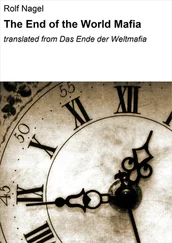Indeed, John betrays something dark and disturbing in his own sexual imagination at precisely the moment when he conjures up the famous seductress, richly draped in silk and jewels, and casts his mind’s eye on what she carries in her hand—“a golden cup full of the impurities of her fornication.” 97In a book full of revelations great and small, it is highly revealing passage. When John invites us to imagine exactly what “abominations” and “impurities” are sloshing around in that golden cup, the man who wrote the book of Revelation is telling us everything we need to know about his own tortured attitude toward human sexuality.
John is plainly obsessed with purity in all things, including not only abstract notions of theology but also such thoroughly human concerns as sex, food, and money. And his obsessive personality may help us understand why the book of Revelation has always exerted such a powerful influence on readers with similar traits, ranging from religious zealots to the clinically insane. Indeed, as we shall see, John provides a proof text for code breakers and conspiracy theorists who, like John himself, are prone to see the Devil in the unlikeliest of guises.
Among the mysteries that John scatters through the text of Revelation, none has borne such strange fruit as “the number of the beast”—that is, the alphanumeric code that is meant to symbolize the name of the Roman emperor under whom John is living and working, the emperor whose name is chiseled on stone altars in the seven cities and stamped on coins of gold and silver that circulate throughout the empire. “Here is wisdom,” writes John in what may be the single most obsessively pondered passage in the whole of Revelation. “Let him that hath understanding count the number of the beast: for it is the number of a man; and his number is six hundred threescore and six.” 98
One approach to penetrating the secret of the number 666 focuses on the contrast between the symbolic meaning of sixes and sevens in the book of Revelation. John, as we have seen, was obsessed with the number seven, a symbol of divine perfection that derives from the fact that God is shown in Genesis to complete the creation of the world in exactly seven days. If seven symbolizes divine perfection, as Bible commentators have long suggested, then six symbolizes human (rather than satanic) imperfection—and 666 “is the number of a man,” as John plainly states.
But the number 666 also means something else and something quite specific to the author of Revelation. John, as we have noted, is engaging in the ancient practice of numerology—that is, the extraction of supposedly secret meanings from the arrangement and manipulation of numbers, a commonplace in biblical and mystical writings. Here, John is suggesting that the number 666 is a cipher that contains the name of the human being whom he denounces as the “beast”: 666 is, quite literally, “the number of his name.” And John suggests that at least some of his readers and hearers have already cracked the code: “Let him that hath understanding count the number of the beast.” 99
In ancient Hebrew, Greek, and Latin, the letters of the alphabet were also given numerical values, and thus the letters could be used in the way that we use Arabic numerals today. The most familiar example—and the only one still common in the Western world today—is the use of Roman numerals to indicate a date; for example, this book was first published in 2006—that is, MMVI. To give a simple example of the alphanumeric code that the author of Revelation is using, suppose that “A” can also be used to indicate “1,” “B” to indicate “2,” “C” to indicate “3,” and so on. Thus, the common English word “cab” could be encoded in the number “6,” which is the total of the numerical value of each of its letters.
So when John refers to the “number of the beast,” he means the numerical value of the letters of a name as it is written in Greek, Latin, or Hebrew. The name, it is commonly assumed, belongs to a Roman emperor. The traditional solution to the puzzle that John has planted in Revelation is that 666 is the numerical value of the letters that spell out the name of the first Roman emperor to persecute the Christians, Caesar Nero (37 C.E.–68 C.E.). But, as we have noted, the earliest commentators on Revelation insist that the text first appeared during the reign of Domitian (51 C.E.–96 C.E.) in the last decade of the first century, nearly thirty years after Nero had taken his own life. For that reason, most scholars agree that any reference to Nero in the number of the Beast is a backward glance into recent history rather than a prophecy of things to come.
No single line of text in Revelation, however, has prompted more conjecture and dissension than “the name of the beast.” Some early manuscripts of Revelation give the number of the Beast as 616 rather than 666, for example, and a few scholars propose that 616 encodes the name of Gaius or Caligula rather than Nero. Then, too, the numerical value of a word depends on the vagaries of its spelling, and the various imperial names and titles are formulated and spelled differently in Greek, Latin, and Hebrew. Thus, for example, the numerical value of Nero’s name and title in Hebrew can be either 616 or 666, depending on how they are spelled, and that may explain why both numbers appear in the ancient manuscripts of Revelation.
John himself vastly complicates the problem by introducing an eerie but deeply enigmatic prophecy about the Beast that begins with the Great Whore of Babylon riding around on a red beast with “seven heads and ten horns.” 100Like the Hebrew prophets who were his role models, John is quick to assure his readers that the whore, the beast, the heads, and the horns are all purely allegorical: “Why marvel?” says his angelic guide. “I will tell you the mystery of the woman, and of the beast with seven heads and ten horns that carries her.” The seven heads, for example, are revealed to symbolize “seven kings, five of whom have fallen, one is, the other has not yet come, and when he comes he must remain only a little while.” 101
The enterprise of identifying the seven Roman emperors who are symbolized by the seven heads is yet another cottage industry among the interpreters of Revelation, both amateur and professional, ancient and modern. Some start counting with Julius Caesar, and others with Augustus; some count all the early Roman emperors, both famous and obscure, while others find themselves forced to pick and choose among them in order to come up with Nero as the emperor who “is.” The emperor-counting game, however, turns out be a dead end when it comes to fixing the identity of the emperor whose number is 666.
Indeed, even when John promises to solve the mysteries in Revelation, he cannot seem to resist the impulse to make them even more mysterious. Moments after the angel begins to explain the symbolism of the seven heads, for example, he offers yet another mind-bending riddle: “The beast you saw,” says the angel, “was, and is not, and is to ascend from the bottomless pit.” 102Some scholars suggest that John is now thinking of the ancient Roman tradition that the slain Nero would one day rise from the dead and return to the throne. Nero redivivus, they propose, is “the beast that was, and is not, and yet is,” the arch-villain in whose reign the world will finally come to an end. 103
Some expert readers of Revelation, fatigued and frustrated by the effort to crack all the codes and solve all the riddles, dismiss the whole enterprise as nothing more than “arid conjecture.” 104The reality is that we do not and cannot know exactly which Roman emperor John has in mind when he speaks of “the beast.” As far as John is concerned, however, it hardly matters. If John makes one thing clear in Revelation, it is that he regards all of the Roman emperors—and each one of his many enemies, regardless of rank or citizenship—as equally worthy of fear and loathing.
Читать дальше










